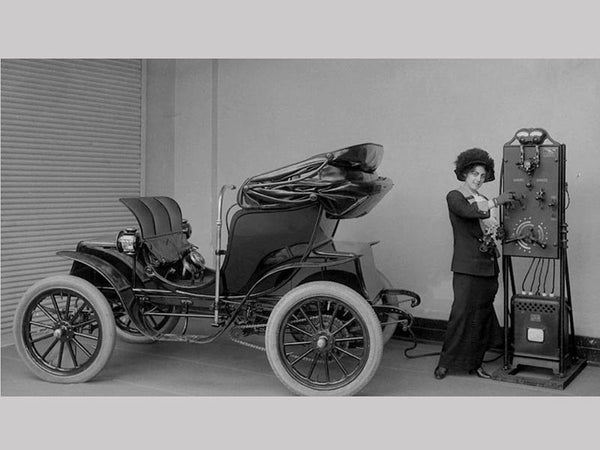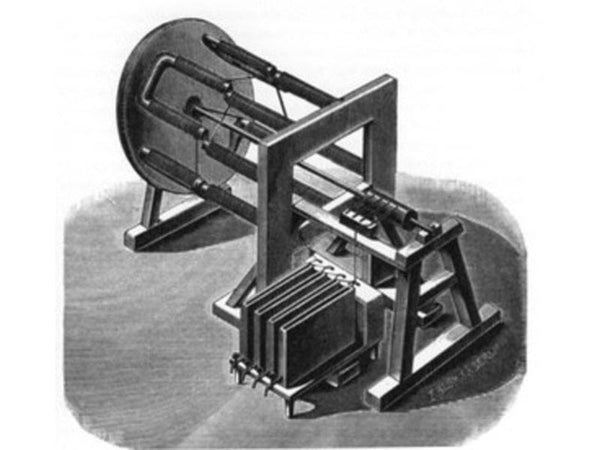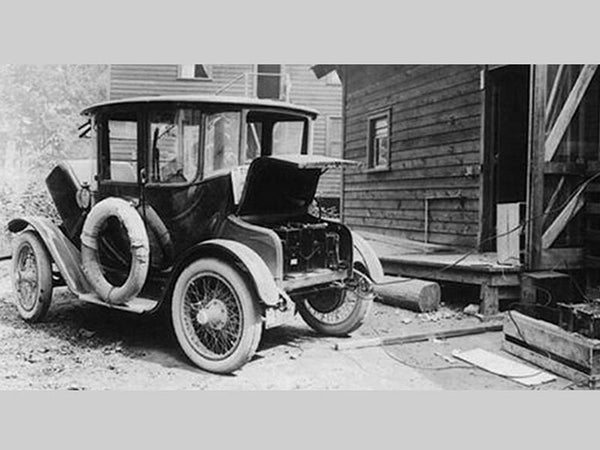
|
Main content: |
At the end of the 19th century, the world's science and technology progressed rapidly. With the continuous improvement of lead-acid batteries, the emergence of pneumatic tires, the invention of steering wheels and steering rods, the advent of manual and foot brakes, and the technical improvement of electric drive system chargers, controls and electric motors, these are all important for electric vehicles. Technological advances have injected energy and accelerated the development of electric vehicles.
1.Development of battery
Following the invention of lead-acid batteries by Plant in 1859, lead-acid batteries have been widely used. In use, the imperfections of the early lead-acid batteries were exposed one by one, which aroused the research interest of scientists from all over the world, and was continuously improved in subsequent applications. In 1881, Faure discovered the importance of the porous coating of the battery lead plate, and applied for the corresponding technical patent. The efficiency of Fore cells is as high as 80%. In the same year, Folkman, Theron and Swan filed a patent for the perforated lead plate. In addition, Swan has realized the honeycomb structure of the lead-acid battery, which makes the active material and the plate more firmly bonded. Sailong used the lead-antimony alloy to make the active material better adhere to the lead plate, which is still in use today. However, the vibration of the car during driving is easy to cause the battery to short circuit, until the "Formen" technology appeared in 1895 to solve this problem well. These improved technologies above increase the adhesion of lead oxide powder, reduce the impact of vehicle body vibration on the battery, and prolong the service life of the battery. During this period, there was no battery that could be used as the mainstream of the on-board power supply for electric vehicles. Since 1910, the three tasks of starting, lighting and igniting vehicles have been completed by lead-acid batteries, and the telephone industry also uses lead-acid batteries as backup power sources. At the same time, the number of electric vehicles has grown rapidly. The rising demand has promoted the industrial production of lead-acid batteries. In 1912, the famous American inventor Edison applied platinum wire to the upper space of the single cell and applied for a patent. The main principle is that when the current passes through, platinum becomes a catalyst for hydrogen and oxygen to combine with heat. This catalyst can make the precipitated hydrogen and oxygen react chemically again and return to the electrolyte. Although the patent was not officially applied due to various reasons, it was still a major event in the development of lead-acid batteries. In the 1920s, the Exide company of the United States launched a tubular electrode plate, which used a hard rubber tube with multiple gaps to accommodate the active material, and a lead alloy rod was inserted in the middle to conduct electricity, which greatly improved the depth resistance of the electrode plate. charge and discharge capacity.
2.Development of electric motors
In 1834, Jacobi changed the performance of the DC motor with a commutation device, and increased the output power by using electromagnets in the motor instead of the permanent magnets previously used. Since then, the electromagnetic theory has been further improved, and the practicality of DC motors and generators has been continuously strengthened.
In the most primitive motor, the rotor is a copper cylinder, and its output torque is difficult to meet the large power demand of electric vehicles. To increase the rotor torque of the motor, the structure of the rotor must be improved. Until 1861, Paserotti designed the slotted ring armature, and his invention of the ring DC motor greatly increased the output torque. On this basis, Gram invented the annular slotless closed armature, which is the basic structural form of modern DC motors. This period is the primary stage of the technical development of DC motors, that is, the stage of gradual finalization from model to prototype.

The cost and economic benefits of electric vehicles driven by electric energy are better than those of steam vehicles or gasoline vehicles, which largely depends on the price of grid electricity. The improvement of power generation technology and the improvement of power generation efficiency greatly affect the economics of electricity consumption. During this period, DC generators also experienced a process of structural finalization and practicality. In 1866, Siemens replaced permanent magnets with electromagnets and successfully developed the first self-excited generator. In 1872, a new type of drum rotor came out, which further reduced the production cost of the motor and opened the curtain of the large-scale application of the motor. By the 1890s, DC generators had all the structural characteristics of modern DC generators, and at the same time, the technology of AC generators had also been greatly developed, thereby improving the efficiency of power generation, providing cheap electricity through the grid, and promoting electric vehicles. commercialization.
3.Charging technology
Modern electric vehicles usually use on-board chargers, but none of the electric vehicles at the time had on-board chargers. At that time, off-board chargers were commonly used, and the input current was provided by the 110-volt DC grid that was widely used at the time. During the charging process, it is necessary to measure the density of the electrolyte with a hydrometer from time to time to monitor the charging status of the battery. Due to the lack of an overcharge protector, a person on duty is required during the charging process. This kind of charger is relatively simple in structure and cheap in price. At that time, people put a lot of such chargers in a room to charge a large number of vehicle batteries centrally, forming a typical charging station at that time. When the power of the electric vehicle is low, it is only necessary to go to the charging station to replace the battery. At that time, the battery was assembled in a box. Because the battery pack was relatively heavy, a scooter with small wheels was used for transportation; when replacing the battery, just remove the used battery pack box from the bottom of the car and replace it It is already charged.

4.Grid
Since the 1860s and 1970s, the technology of generators has become more and more mature, and people have begun to consider centralized production of electricity. The first to be built were coal-fired thermal power plants. In 1875, the world's first DC generator set was completed at the Gare du Nord in Paris, France, which was the world's first power plant. In 1879, the world's first commercial power plant was built in San Francisco, USA. However, in order to use the electricity centrally produced by the power plant, the decentralized power consumption units must also solve the problem of long-distance transmission. In 1882, Deppler proposed a method of long-distance power transmission, which can transmit electricity from a hydropower plant 57 kilometers away to Munich. This is the earliest and simplest remote power supply system in the world. On this basis, people connect transmission lines into a network to form the initial power grid, and electricity becomes an excellent and cheap energy source. In 1886, the Americans invented the AC power transformer that uses the boost method to supply power over a long distance, and human beings entered the era of high-voltage power transmission. In 1891, in Russia, a 13.8 kV line was successfully established. It used three-phase AC power supply for the first time, and the real power grid was thus produced. Lenin pointed out: "The power industry is an industrial sector that best represents the latest technological achievements and represents the capitalism of the late 19th and early 20th centuries." The emergence of the power grid has promoted the rapid development of a series of new industries such as the power industry and electrical appliance manufacturing. Of course, it has also effectively promoted the commercialization of electric vehicles, and human history has entered the "electric age" from the "steam age" as a sign.

















